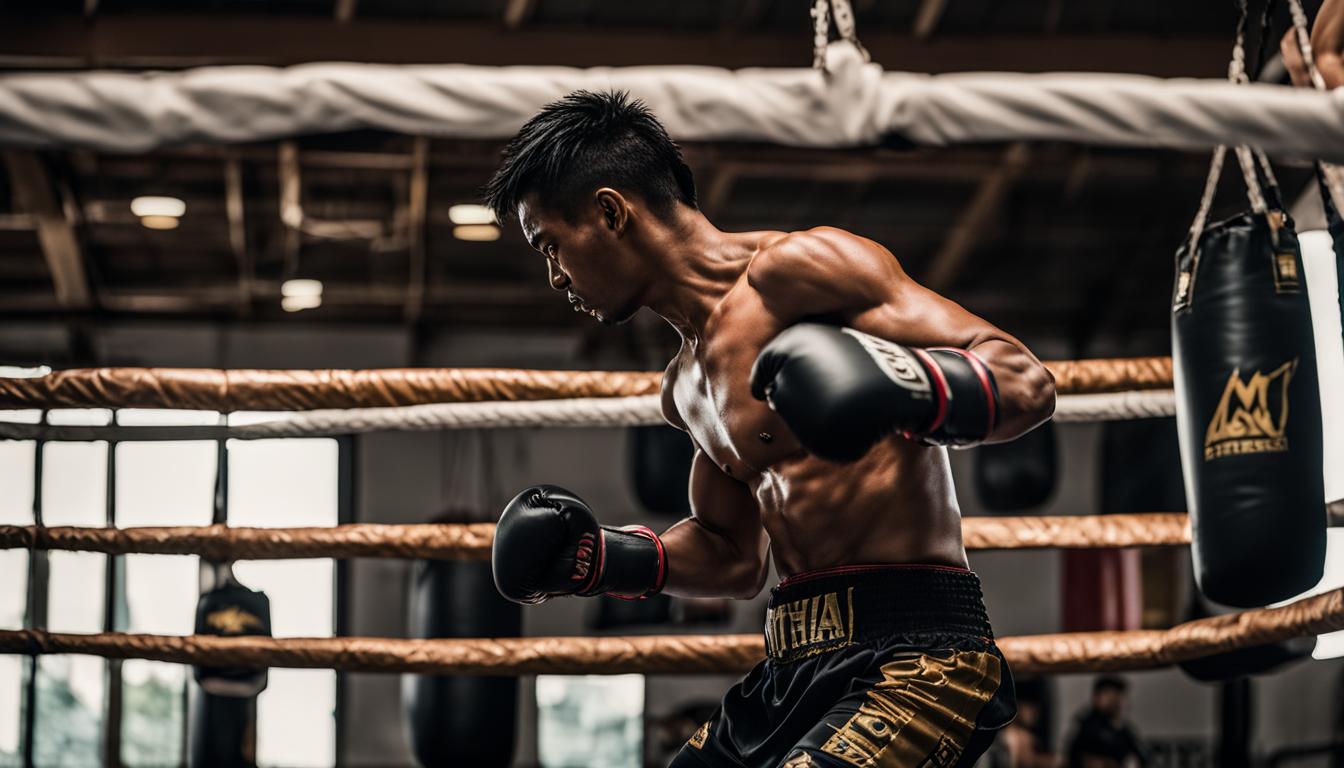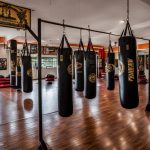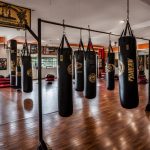Muay Thai, known as the “Art of Eight Limbs,” is a highly effective striking discipline and Thailand’s national sport. In this beginner’s guide, you will discover everything you need to know to start training in Muay Thai. From mastering stances and footwork to learning various strikes and styles, this guide will equip you with the knowledge to become a successful Muay Thai practitioner.
Key Takeaways
- Muay Thai is an effective striking discipline, known as the “Art of Eight Limbs.”
- It is Thailand’s national sport and offers a welcoming environment for beginners.
- Stance and footwork are crucial foundations in Muay Thai training.
- Punches, kicks, knees, and elbows are fundamental techniques in Muay Thai.
- The clinch and defensive strategies play integral roles in the sport.
Stance and Footwork in Muay Thai
In the world of Muay Thai, having a strong stance and proficient footwork is essential for success. The right stance provides a solid foundation, while proper footwork allows for effective movement, power generation, and defense. Let’s explore the key components of stance and footwork in Muay Thai training.
Stance:
A balanced and stable stance is crucial in Muay Thai. It begins with proper foot placement, where the feet are positioned shoulder-width apart, with the lead foot slightly turned outwards. This positioning helps maintain stability and allows for quick movement in any direction. Additionally, the knees should be slightly bent, and the weight evenly distributed between both legs. The boxer’s upper body should be relaxed, shoulders down, and the chin tucked in to protect the jaw.
Footwork:
Footwork involves the movement of the feet during combat. In Muay Thai, footwork is not only about getting from point A to point B; it is also about generating power and evading strikes. The two main footwork techniques used in Muay Thai are the step drag and the slide step. The step drag involves taking small steps while dragging the rear foot, while the slide step involves pushing off the rear foot to create distance. Both techniques offer versatility and enable fighters to maintain balance and control.
Mastering the basics of stance and footwork is essential for any aspiring Muay Thai practitioner. With a solid foundation and effective footwork, fighters can execute strikes, defend against opponents, and move with agility in the ring.
| Key Points | Benefits |
|---|---|
| Proper foot placement | Ensures stability and balance |
| Relaxed upper body | Promotes fluid movement and reduces tension |
| Bent knees | Provides flexibility for quick transitions |
| Step drag and slide step | Enables efficient movement and power generation |
As the saying goes, “A house built on a weak foundation will not stand.” In Muay Thai, the stance acts as the foundation for all techniques and movements. It is the starting point from which everything else is built. By mastering the proper stance and footwork, fighters gain the stability, balance, and mobility needed to execute strikes, evade attacks, and maintain control in the ring.
Punches in Muay Thai
In addition to the devastating kicks and lethal elbow strikes, punches play a significant role in the art of Muay Thai. While punches may not be as emphasized as other techniques, they are still essential for a well-rounded fighter. One of the fundamental punches in Muay Thai is the jab, which serves multiple purposes in the ring.
The jab is a versatile punch that can be used to set up combinations, disrupt the opponent’s rhythm, and gauge distance. It is typically executed by extending the lead arm straight towards the target, aiming to land with the front knuckles. The jab can be thrown from various angles and can be followed up with more powerful strikes or used as a defensive tool to keep the opponent at bay.
Proper technique is crucial for executing effective punches in Muay Thai. This includes maintaining a strong and balanced stance, rotating the hips and shoulders for added power, and snapping the punch back quickly to guard against counterattacks. Training drills and sparring sessions help fighters develop accuracy, timing, and speed with their punches, enabling them to effectively land strikes while maintaining defensive readiness.
Benefits of the Jab in Muay Thai
The jab offers several benefits to a Muay Thai practitioner:
- Distance Control: The jab allows fighters to measure the distance between themselves and their opponents, enabling them to strike from a safe range and avoid being hit.
- Disruption: By repeatedly jabbing, fighters can disrupt the opponent’s rhythm and timing, making it difficult for them to launch their attacks effectively.
- Combination Setup: The jab sets up opportunities for powerful combinations. By using the jab to find openings and create openings, fighters can unleash devastating follow-up strikes.
- Defense: The jab can be used as a defensive tool to keep opponents at bay, preventing them from closing the distance and launching their own attacks.
Mastering punches in Muay Thai requires dedication, practice, and proper guidance. Coaches and trainers play a vital role in refining the technique and helping fighters develop the necessary skills to land accurate and powerful punches. With consistent training and a focus on technique, fighters can enhance their striking abilities and become well-rounded Muay Thai practitioners.
Kicks in Muay Thai
Kicks are a signature element of Muay Thai, showcasing the devastating power and precision that the artform is known for. The roundhouse kick, in particular, is one of the most frequently used kicks in Muay Thai. It involves rotating the hips and swinging the leg in a circular motion, striking the opponent with the shin or foot. The roundhouse kick is highly effective for targeting various areas of the body, including the ribs, legs, and head.
Alongside the roundhouse kick, Muay Thai also features other kicks that add versatility to a fighter’s arsenal. Front kicks are executed using the ball of the foot, aimed at the opponent’s midsection or face. Side kicks involve pushing the leg straight out to the side, targeting the ribs or legs. Spinning kicks, on the other hand, require the fighter to rotate their entire body, generating significant momentum for a powerful strike. Mastering these different kicks is essential for developing a well-rounded Muay Thai skillset.
In order to execute kicks with maximum speed and force, proper technique and timing are imperative. It’s crucial to maintain good balance throughout the kick and ensure proper hip rotation to generate power. Additionally, flexibility and conditioning exercises play a significant role in enhancing a fighter’s kicking abilities.
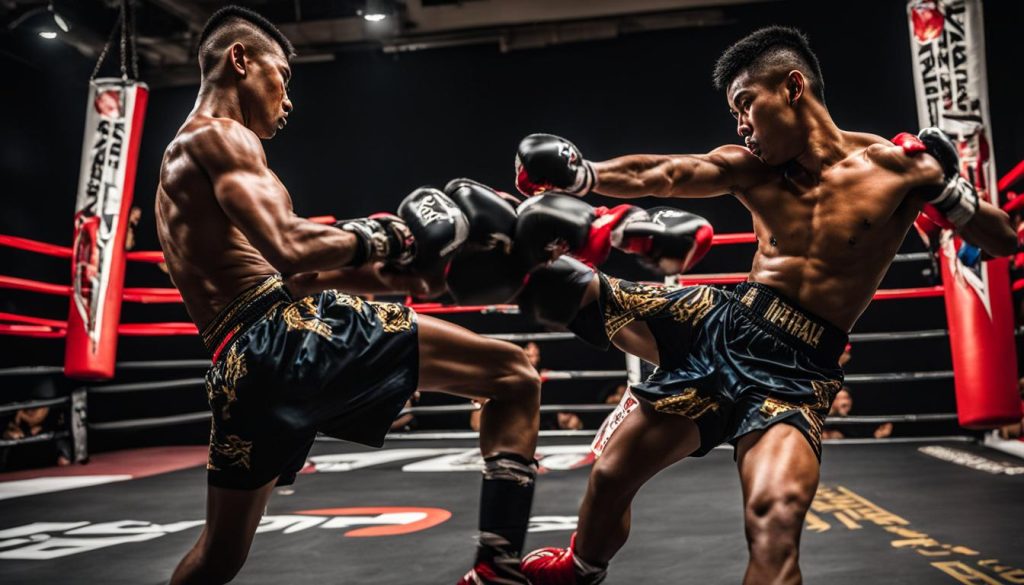
The Roundhouse Kick Technique
The roundhouse kick is a fundamental move in Muay Thai that requires precision and skill. To execute the roundhouse kick, follow these steps:
- Start in a proper fighting stance, with one foot slightly forward and the toes pointing slightly outward.
- Rotate the hip of your rear leg while turning your front foot inward.
- Bring the kicking leg up, chambering the knee toward your chest.
- Extend your leg and pivot on the ball of your support foot, while simultaneously rotating your hip and striking with the shin or foot.
- Retract your leg back to the chambered position and return to your fighting stance.
Remember to practice this technique under the guidance of a qualified instructor and gradually increase speed and power as your skill and confidence improve.
Knees in Muay Thai
In Muay Thai, knee strikes are a formidable weapon that can deliver devastating blows to opponents. The technique and execution of knee strikes require precision and control to maximize their effectiveness. Knees can be employed both in close-range combat and within the clinch, making them versatile and powerful tools in a Nak Muay’s arsenal.
When executing knee strikes in Muay Thai, proper technique is crucial. The practitioner must generate power from the hips and core while maintaining balance and stability. It is essential to engage the entire body, driving the knee forward with force and accuracy. The point of impact should be targeted to vulnerable areas of the opponent’s body, such as the ribs, abdomen, or head, depending on the situation.
Mastering knee strikes in Muay Thai requires consistent practice and refinement. Training drills that focus on knee strikes from different positions and angles can help develop the necessary skills and muscle memory. Additionally, clinch work is vital for understanding how to effectively employ knees in close-quarters combat, utilizing clinching techniques to control the opponent and create openings for knee strikes.
While knee strikes in Muay Thai can inflict significant damage, it is important to exercise caution and control during sparring or competition. The power and intensity of knee strikes should always be adjusted according to the level of training and the experience of the training partner or opponent. Safety and respect for one another’s well-being are paramount in the practice of Muay Thai.
Table: Common Knee Strikes in Muay Thai
| Knee Strike | Technique | Target Area |
|---|---|---|
| Straight Knee | Thrust the knee forward using hip rotation | Ribs, abdomen |
| Curving Knee | Swing the knee in an arc, aiming for the ribs or head | Ribs, head |
| Jumping Knee | Spring off the lead leg to generate power for a knee strike | Upper body, head |
| Step-in Knee | Step forward with one leg while driving the knee upward | Ribs, abdomen |
“The knee strikes in Muay Thai have the potential to end a fight with a single blow. It is essential for practitioners to hone their technique and develop the ability to generate power from the hips and core. Proper execution of knee strikes can significantly enhance one’s effectiveness in the ring or self-defense situations.” – Muay Thai Master
Elbows in Muay Thai
Elbow strikes are a crucial component of Muay Thai, known for their devastating impact and ability to cause significant damage to opponents. These close-range techniques can be executed with precision and power, making them highly effective in both offensive and defensive situations.
The use of elbows in Muay Thai requires proper technique and control, as they carry a higher risk of injury compared to other strikes. There are various types of elbow strikes, each with its own purpose and application. The horizontal elbow, for example, is a powerful strike that aims to cut across the opponent’s face or body. The diagonal elbow, on the other hand, is delivered at an angle to create a slicing motion, targeting vulnerable areas such as the temple or collarbone. Spinning and upward elbows are also commonly used in Muay Thai, offering versatility and unpredictability in combat.
Mastering the art of elbow strikes involves precise timing, footwork, and understanding of distance. By incorporating elbows into their arsenal, Muay Thai practitioners can enhance their striking capabilities and create openings for devastating attacks. However, it is essential to train under the guidance of experienced instructors to ensure proper technique and minimize the risk of injury.
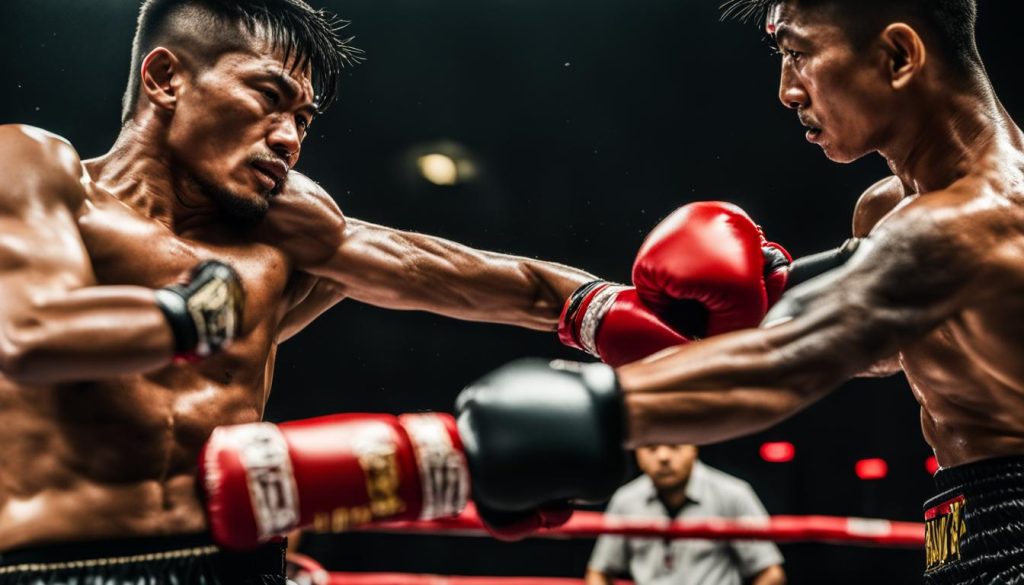
Kru Pichai on the Power of Elbow Strikes
“In Muay Thai, elbows are like scalpels. They allow you to cut through your opponent’s defense and leave a lasting impact. Every fighter should strive to develop their elbow strikes because they can change the course of a bout in an instant. However, precision is key, as one well-executed elbow strike can be more impactful than a barrage of punches or kicks.”
The Clinch in Muay Thai
The clinch is a vital aspect of Muay Thai that sets it apart from other striking disciplines. It involves close-range grappling and controlling the opponent’s movements. In the clinch, fighters use a combination of techniques such as knee strikes, elbow strikes, and sweeps to gain an advantage. The clinch requires skill, technique, and strength, making it an integral part of a Nak Muay’s arsenal.
In Muay Thai, the clinch can be initiated by either fighter, and it often occurs when one fighter grabs the back of the opponent’s head or neck and pulls them into a tight embrace. Once in the clinch, both fighters will work to establish control by manipulating each other’s posture and balance. This involves using various grips, hand positions, and body movements.
The clinch offers numerous offensive and defensive opportunities. In addition to delivering devastating knee strikes and elbow strikes, fighters can use the clinch to control their opponent’s movements, nullify their striking power, and tire them out. Effective clinching requires a deep understanding of body mechanics, leverage, and timing.
Overall, the clinch is an essential element of Muay Thai that requires dedicated practice and study. By mastering clinching techniques, fighters can add a new dimension to their game and become well-rounded practitioners of the “Art of Eight Limbs”.
Defense in Muay Thai
Defense is a crucial aspect of Muay Thai training and is essential for protecting oneself from incoming strikes. Effective defense not only prevents injuries but also creates opportunities for counterattacks. In Muay Thai, there are various blocking techniques that fighters employ to deflect or absorb strikes and minimize their impact.
Blocking Techniques
One of the most common blocking techniques in Muay Thai is the forearm block, where the fighter raises their forearm to protect their head, face, and body. This technique is useful for defending against punches, elbows, and some kicks. Another commonly used technique is the shin block, where the fighter raises their shin to block low kicks. This technique is effective in minimizing the impact of powerful leg strikes.
Additionally, fighters utilize the shoulder roll technique to defend against hooks and overhand punches. By rolling the shoulder and turning the body, they are able to deflect the blows and reduce the chances of getting hit cleanly. Clinching is another defensive strategy used in Muay Thai, where fighters engage in close-range grappling to control their opponent’s movements and neutralize their attacks.
Evasion Techniques
In addition to blocking techniques, fighters also employ evasion techniques to avoid getting hit. One such technique is footwork, where fighters constantly move and change angles to make it difficult for their opponents to land strikes. This involves stepping back, sidestepping, pivoting, and circling around the opponent.
Moreover, fighters use head movement to evade punches and kicks. Techniques such as slipping, ducking, and weaving are employed to make it challenging for the opponent to connect with clean strikes. By constantly moving their head and changing levels, fighters can effectively avoid taking damage.
The Importance of Defense
Having a strong defense is crucial in Muay Thai as it allows fighters to stay in the fight for longer, withstand powerful strikes, and exhaust their opponents. It is important to note that defense should not be passive but rather an active part of a fighter’s strategy. By utilizing proper blocking and evasion techniques, fighters can create openings for counterattacks and gain an advantage in the match.
| Blocking Techniques | Evasion Techniques |
|---|---|
| Forearm Block | Footwork |
| Shin Block | Head Movement |
| Shoulder Roll | |
| Clinching |
The Different Styles of Muay Thai
Muay Thai is a dynamic martial art that encompasses a wide range of fighting styles. Each style has its own unique characteristics and techniques, allowing fighters to adapt their approach based on their strengths and preferences. Understanding the different styles of Muay Thai can provide valuable insights into the sport and help practitioners develop a well-rounded skillset.
One popular style of Muay Thai is the aggressive forward-moving style, which focuses on relentless pressure and powerful strikes. Fighters utilizing this style often employ heavy punches and low kicks to overwhelm their opponents and dictate the pace of the fight. They constantly push forward, looking to close the distance and engage in close-range combat.
On the other hand, defensive styles of Muay Thai prioritize evasive footwork, precise timing, and counterattacks. These fighters are adept at dodging and blocking strikes, using their opponents’ aggression against them. They employ swift and accurate strikes to exploit openings and create scoring opportunities.
“Styles make fights.”
Styles in Action:
To better understand the different styles of Muay Thai, let’s take a closer look at two prominent fighters who embody these approaches:
| Fighter | Style |
|---|---|
| Saenchai | Defensive Counterstriker |
| Buakaw Banchamek | Aggressive Pressure Fighter |
Saenchai is known for his exceptional defensive skills and ability to counterattack with precision. He utilizes evasive footwork and slick head movement to avoid his opponents’ strikes, often making them miss by mere inches. Saenchai’s lightning-fast strikes and counter combinations make him a formidable opponent in the ring.
Buakaw Banchamek, on the other hand, is a relentless forward-moving fighter. He overwhelms his opponents with a relentless barrage of punches, kicks, and knee strikes. Buakaw’s aggressive style and explosive power have earned him numerous accolades, and he is revered as one of the most exciting fighters in Muay Thai history.
These are just two examples of the diverse styles within Muay Thai. Fighters often develop their own unique style by combining elements from different approaches, creating a style that suits their strengths and preferences.
By understanding the different styles of Muay Thai, practitioners can broaden their knowledge, appreciate the intricacies of the sport, and gain insights into the strategies employed by top-level fighters.
Rules and Scoring in Muay Thai
Muay Thai, like any other combat sport, has specific rules and a scoring system in place to ensure fair competition and determine the winner of a match. Understanding these rules and the scoring criteria is essential for both spectators and practitioners. The rules of Muay Thai govern everything from the use of legal strikes to the conduct of the fighters inside the ring.
Rules of Muay Thai
In Muay Thai, fighters are allowed to use a combination of punches, kicks, elbows, and knees to strike their opponents. However, certain strikes, such as strikes to the groin or the back of the head, are considered illegal and can lead to penalties or disqualification. Fighters must also adhere to rules regarding clinching, which is the close-range grappling and controlling of the opponent.
The referee plays a crucial role in enforcing the rules and ensuring the safety of the fighters. They have the authority to deduct points, issue warnings, or even stop the fight if they deem it necessary to protect the well-being of the competitors.
Scoring System
The scoring system in Muay Thai is based on a 10-point must system, similar to other combat sports. Judges evaluate each round and award the dominant fighter with 10 points, while the other fighter receives a lower score. If both fighters are deemed to be evenly matched in a round, they may both receive 10 points.
The criteria for scoring in Muay Thai include effective striking techniques, dominance in the ring, and overall control of the fight. Judges consider factors such as clean strikes, power, technique, and the ability to evade or counter the opponent’s attacks. Additionally, fighters are rewarded for displaying sportsmanship and respect for their opponents.
At the end of the match, the total scores from all judges are added up, and the fighter with the higher score is declared the winner. If there is a draw, an additional round may be added to determine the winner or, in some cases, the fight may be declared a draw.
| Illegal Strikes in Muay Thai | Possible Penalties |
|---|---|
| Groin strikes | Warning, point deduction, or disqualification |
| Strikes to the back of the head | Warning, point deduction, or disqualification |
| Eye gouging | Disqualification |
| Spitting | Warning, point deduction, or disqualification |
| Biting | Disqualification |
Understanding the rules and scoring system in Muay Thai enhances the appreciation and enjoyment of the sport for both participants and spectators. It allows for a fair and controlled environment where fighters can showcase their skills and determination. Whether you are training in Muay Thai or simply watching a match, having knowledge of the rules and scoring criteria adds depth to your experience.
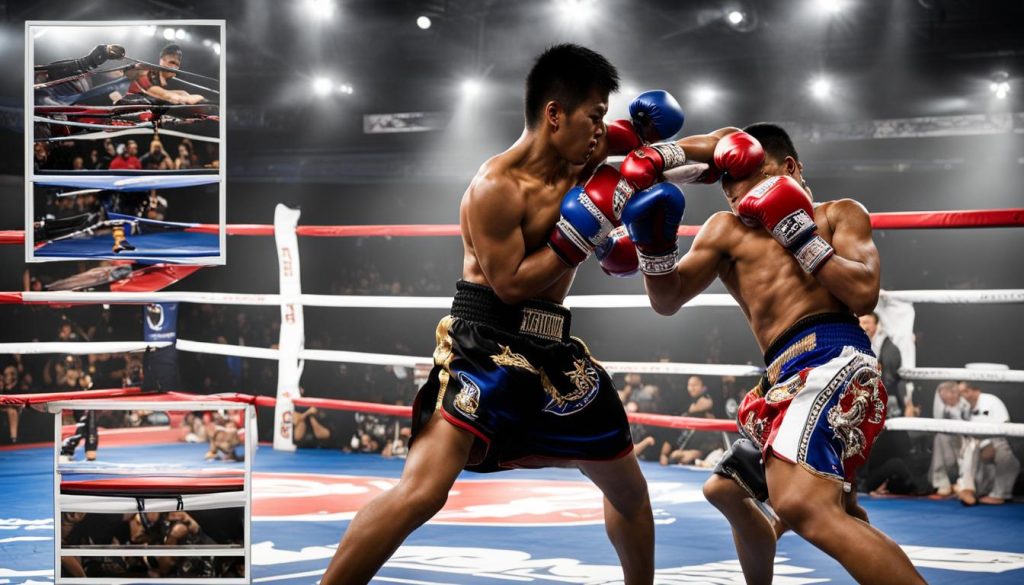
Attire in Muay Thai
Muay Thai has its own unique attire that reflects the traditions and customs of the sport. Whether you are training or competing, wearing the appropriate attire is essential for both comfort and functionality. Here are the key pieces of attire you need to know:
- Muay Thai Shorts: Known as “sangchai” in Thai, Muay Thai shorts are an iconic part of the sport. These shorts are typically short in length and have a wide leg opening, allowing for ease of movement during training and fights. They come in various colors and designs, allowing fighters to express their individuality while adhering to the rules and regulations.
- Gloves: Hand protection is crucial in Muay Thai, and wearing gloves is mandatory during training and fights. The gloves provide padding and support to the hands and wrists, reducing the risk of injury when striking and blocking. It is important to choose the right size and weight gloves based on your training needs and experience level.
- Hand Wraps: Hand wraps are used to provide additional support and protection to the hands and wrists. They help stabilize the joints and reduce the risk of sprains or fractures. Wrapping your hands properly before wearing gloves is a fundamental practice in Muay Thai.
- Shin Guards: To protect the shins during sparring and training, shin guards are essential. They provide padding and absorb the impact of kicks and blocks, reducing the risk of serious injury. Shin guards come in various sizes and styles to accommodate different training preferences.
It is important to note that some gyms or training facilities may have specific attire requirements, so it is advisable to check with your instructor or gym beforehand. Additionally, when competing in professional fights, fighters may be required to wear additional protective gear such as mouthguards, groin guards, and elbow pads.
By wearing the appropriate attire, you can not only ensure your safety but also fully immerse yourself in the traditions and culture of Muay Thai.
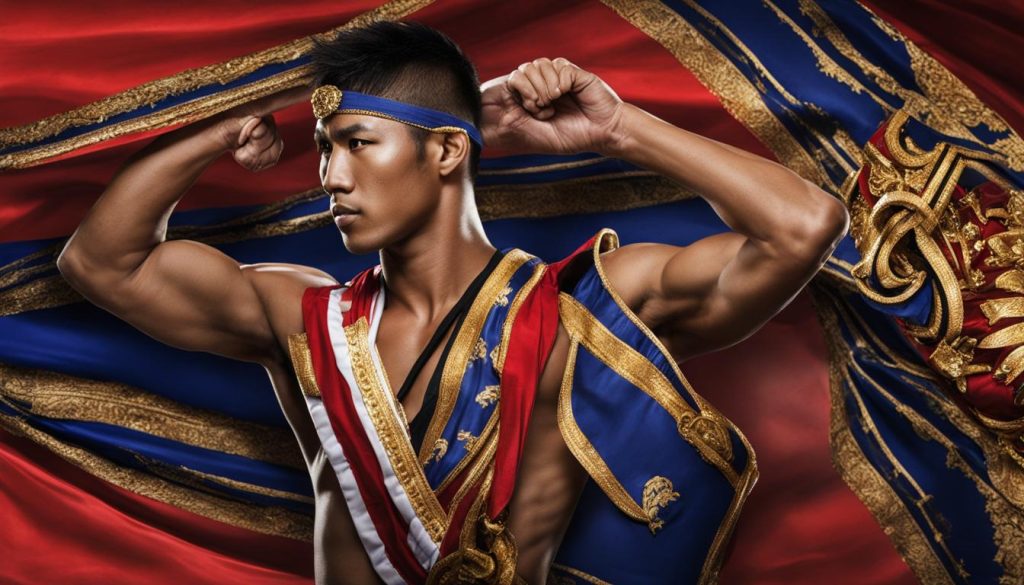
Etiquette and Tips for Your First Muay Thai Class
When attending your first Muay Thai class, it is essential to familiarize yourself with the etiquette and norms associated with the sport. Muay Thai places great importance on respect and cultural traditions, so understanding and adhering to these principles will enhance your overall training experience.
First and foremost, arrive early for your class. This shows respect for your trainers and fellow students and allows you to prepare mentally and physically. Additionally, it gives you the opportunity to observe the class dynamics and learn from others.
In Muay Thai, it is customary to show respect to your trainers and training partners by bowing before and after each training session. This gesture acknowledges their skills and knowledge and fosters a sense of camaraderie within the gym. It is important to maintain a positive attitude and a willingness to learn from your trainers and more experienced peers.
During your training, always listen attentively to your instructor’s guidance and follow their instructions closely. Pay attention to proper technique and form, as this will not only prevent injuries but also enhance your performance. Remember, in Muay Thai, discipline and dedication are key to improvement.
FAQ
What is Muay Thai?
Muay Thai, also known as the “Art of Eight Limbs,” is a striking discipline and Thailand’s national sport. It is highly regarded for its technical superiority and is considered the most effective striking martial art.
Is Muay Thai beginner-friendly?
Yes, Muay Thai is beginner-friendly, and beginners will find a welcoming environment with friendly coaches and training partners.
What is the foundation of Muay Thai?
The foundation of Muay Thai is a strong stance and footwork. It involves proper foot placement, balance, stability, and posture.
What are the fundamental punches in Muay Thai?
The jab is a fundamental punch in Muay Thai. It has various uses, such as setting up combinations and measuring distance.
What are the commonly used kicks in Muay Thai?
The roundhouse kick is one of the most commonly used kicks in Muay Thai. Other kicks include front kicks, side kicks, and spinning kicks.
Are knee strikes important in Muay Thai?
Yes, knee strikes are a powerful weapon in Muay Thai and can cause significant damage to opponents.
Are elbow strikes effective in Muay Thai?
Yes, elbow strikes are one of the most lethal techniques in Muay Thai. They can cause severe damage to opponents at close range.
What is the clinch in Muay Thai?
The clinch is a unique aspect of Muay Thai that involves close-range grappling and controlling the opponent.
How important is defense in Muay Thai?
Defense is crucial in Muay Thai to prevent injury and create opportunities for counterattacks.
What are the different styles of Muay Thai?
Muay Thai encompasses various fighting styles, including aggressive forward movement, heavy punches, low kicks, and defensive techniques.
How are winners determined in Muay Thai matches?
Muay Thai matches have specific rules and a scoring system to determine the winner. Understanding the rules and scoring criteria is important for both spectators and practitioners.
What is the attire for Muay Thai?
Muay Thai has its own unique attire, including shorts, gloves, hand wraps, and shin guards. Each piece serves a specific purpose in training and competition.
What should beginners know about Muay Thai etiquette?
Before attending your first Muay Thai class, it is important to understand the etiquette and norms associated with the sport. This includes respecting the cultural aspects and approaching your first class with an open mind.
Source Links
- https://evolve-mma.com/blog/the-complete-muay-thai-beginners-guide/
- https://fightrr.com/muay-thai/big-thai-boxing-guide
- https://www.tagmuaythai.com/tag/training
Master the Art of Muay Thai: Guide to Successful Training
Last modified: January 1, 2024

